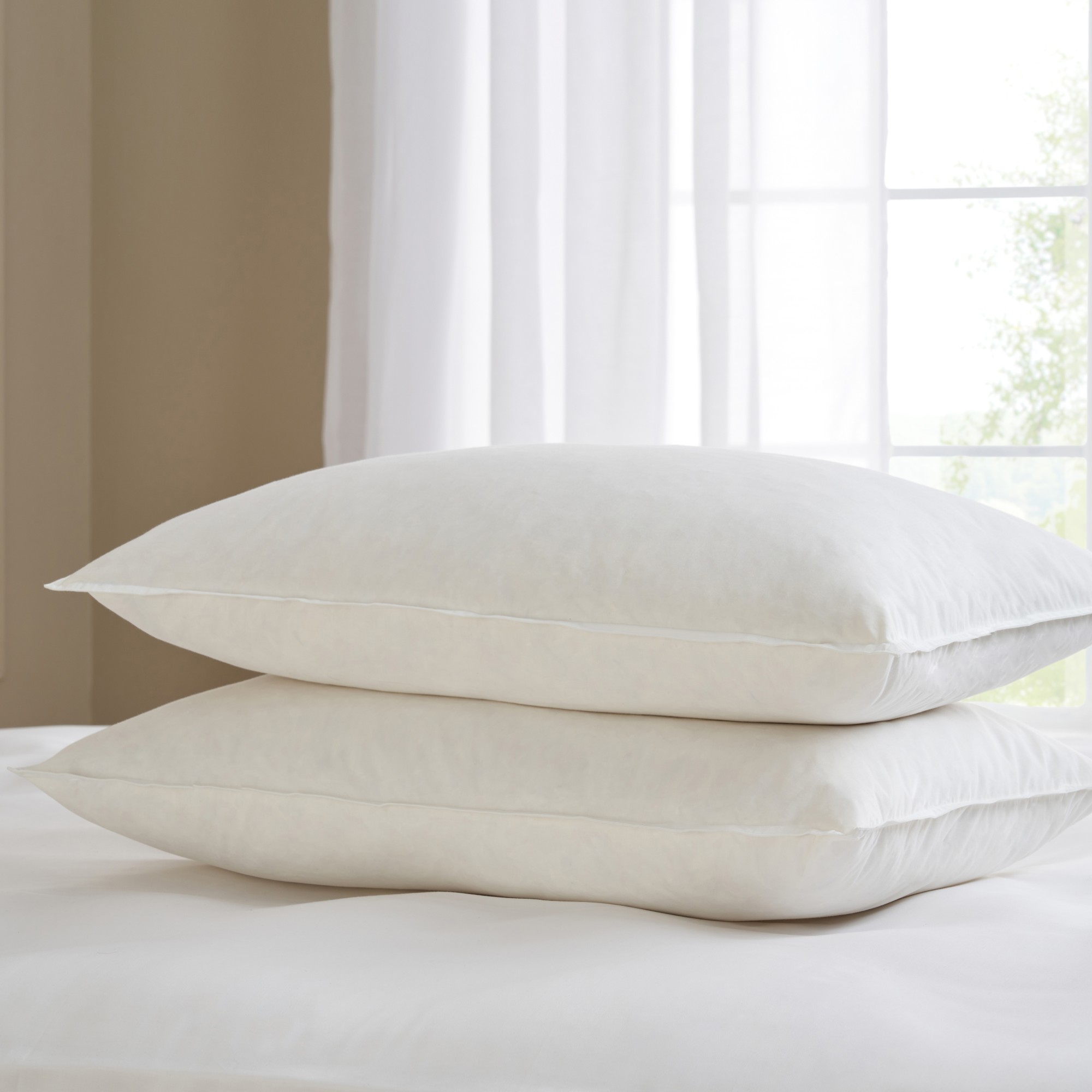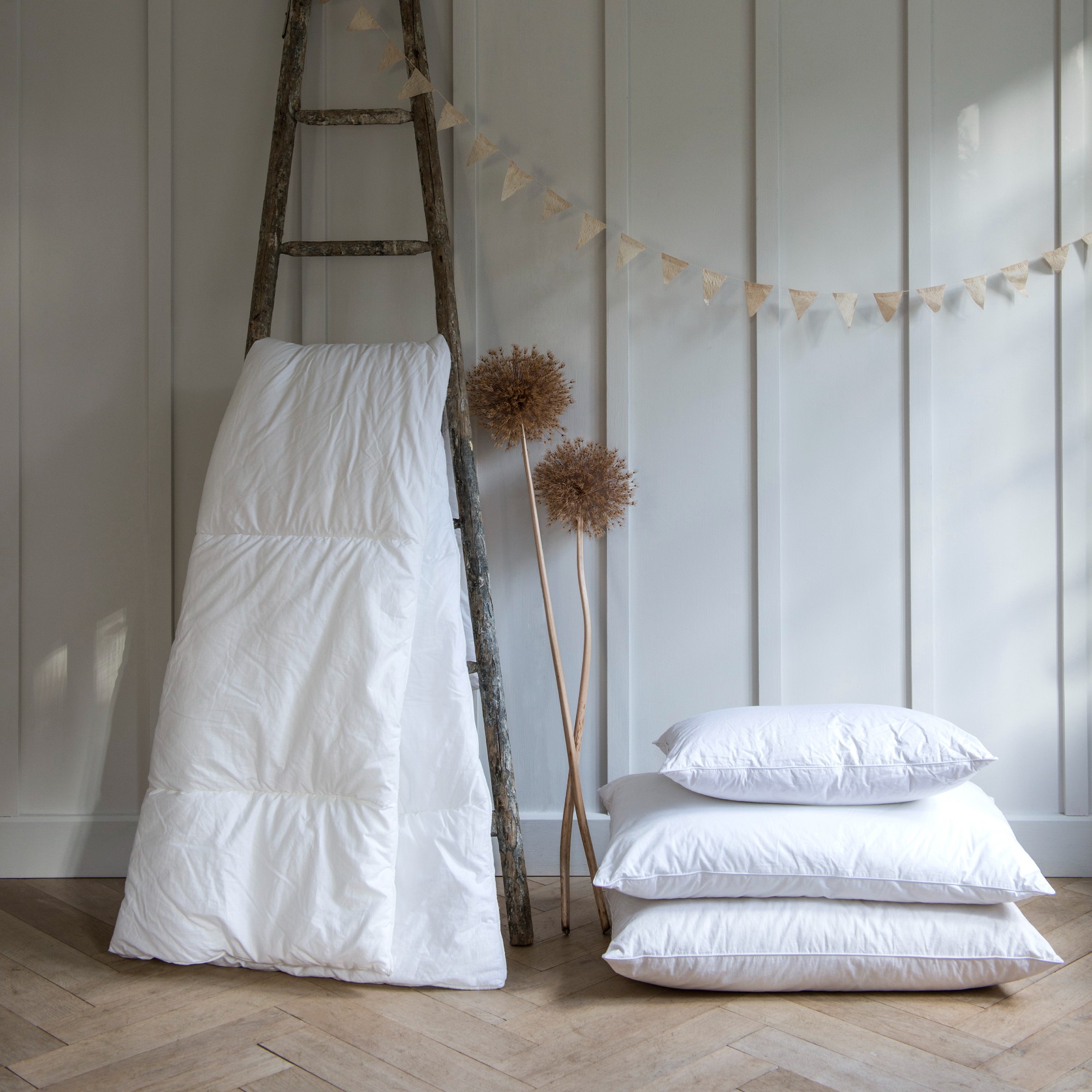Can you wash your precious feather pillows? Here's how to keep them fresh, according to experts
Experts reveal the ins and outs of caring for feather pillows


Feather pillows are favoured for their unmatched softness and easily adaptable support of your head and neck for superior comfort. But when it comes to their care, it is not easy to figure out - can you wash feather pillows? Or should it be avoided? How do you clean them? These are all fair questions.
The upkeep of any kind of pillow is not straightforward but their material is the most important aspect to consider when maintaining them. Even the best pillows get dirty from dust and our natural oils and they need cleaning after a while.
That’s why we turned to our experts to find out how to wash pillows filled with feathers and down and whether it’s even recommended in the first place.
Can you wash feather pillows?

Just like anything else, pillows get dirty too. And feather pillows, one of the best pillows for side sleepers, are no exception. We all use our pillows on a daily basis and they are definitely not immune to our natural body oils.
You might be tempted to wash your feather pillows once in a while and wonder how to go about it - should you put them in a washing machine? Wash them by hand? The bottom line is, experts advise against washing feather pillows altogether.
‘I would highly recommend you avoid washing feather pillows whenever you can and reserving washing only for emergencies,’ says Martin Gill, managing director of And So To Bed.

But why exactly is it bad to wash feather pillows?
Get the Ideal Home Newsletter
Sign up to our newsletter for style and decor inspiration, house makeovers, project advice and more.
‘Regular washing should be avoided to ensure the filler remains at its best and most efficient - washing breaks down the naturally moisture-wicking oils found on the feathers and can cause them to become brittle and break,’ explains Laura Burnett, buyer at Feather & Black.
‘Even if water fully penetrated the outer pillow shell, down feathers are designed by nature to repel water,' adds Martin. 'While washing might marginally improve the cleanliness of the outer pillow shell, washing will do little, if anything, to the bacteria and dust which might be sitting in the filling itself.'
Joanna Ross, general manager of design at luxury bedding brand Sheridan, recommends regular upkeep instead, 'When it comes to maintaining your pillows, we recommend that you fluff and air your pillows regularly for best results.'

How do you wash and dry feather pillows?
If washing your feather pillows is absolutely unavoidable, then the experts give you the green light. But consider other options first.
‘Before you wash your pillows, try to spot clean any visible stains using a soft cloth dampened with soapy water,’ recommends Kriti Mawji, procurement manager at Belledorm.
‘We recommend always using a pillow protector which can be easily removed and washed regularly,' adds Laura.
But if you must, Mike Walker, head of marketing at bedding brand Slumberdown, shares his tips on how to wash your feather pillows.
'When washing your feather pillows, it is always a good idea to wash two at a time as this helps to balance out the washing machine for better performance. When adding in your washing powder, be sure to use less than you would and set your washing machine to the delicate cycle to take care of the feather filling.'

'While hot water is best for killing bacteria, it can also damage the feathers. Use a cooler setting and set it to have an additional rinse and spin cycle as this will get rid of an excess moisture and soap residue.'
Danielle Mason, head of product development at The Fine Bedding Company, then continues with the best way how to dry the pillows as the drying part is perhaps the most important step.
'Once clean, tumble dry on a low, reduced temperature setting with something to help fluff the pillows, like tennis balls, until thoroughly dry as this will help not only dry, but plump up the pillows again. It is essential that the pillow dries properly to avoid mildew growing in the filling,' she says.
‘After drying, remember to fluff your pillows. This helps keep the feathers from clumping together and maintains the pillow's comfort,’ adds Kriti.

The experts are not quite in agreement on how often you should wash your pillows though. While Laura quotes once a month, Kriti recommends no more than every six months. But they both agree that washing should be avoided if at all possible, just to reiterate.

Sara Hesikova has been a Content Editor at Ideal Home since June 2024, starting at the title as a News Writer in July 2023. She is now also the Ideal Home Certified Expert in Training on Furniture, and so far has tested 80 different sofas.
Graduating from London College of Fashion with a bachelor’s degree in fashion journalism in 2016, she got her start in niche fashion and lifestyle magazines like Glass and Alvar as a writer and editor before making the leap into interiors, working with the likes of 91 Magazine and copywriting for luxury bed linen brand Yves Delorme among others.
-
 Mary Berry’s favourite flower to grow in the garden is a low-maintenance winter bloomer - and you can plant it right now
Mary Berry’s favourite flower to grow in the garden is a low-maintenance winter bloomer - and you can plant it right nowThese gorgeous purple blooms will brighten up your garden
By Kezia Reynolds
-
 Will a conservatory add value to your home and how can you maximise it?
Will a conservatory add value to your home and how can you maximise it?This is what the pros say
By Amy Reeves
-
 I’ve been looking for a new signature scent for my home and The White Company's new fragrance is the exact summer holiday smell I needed
I’ve been looking for a new signature scent for my home and The White Company's new fragrance is the exact summer holiday smell I neededSantorini smells fresh, summery and sophisticated
By Kezia Reynolds